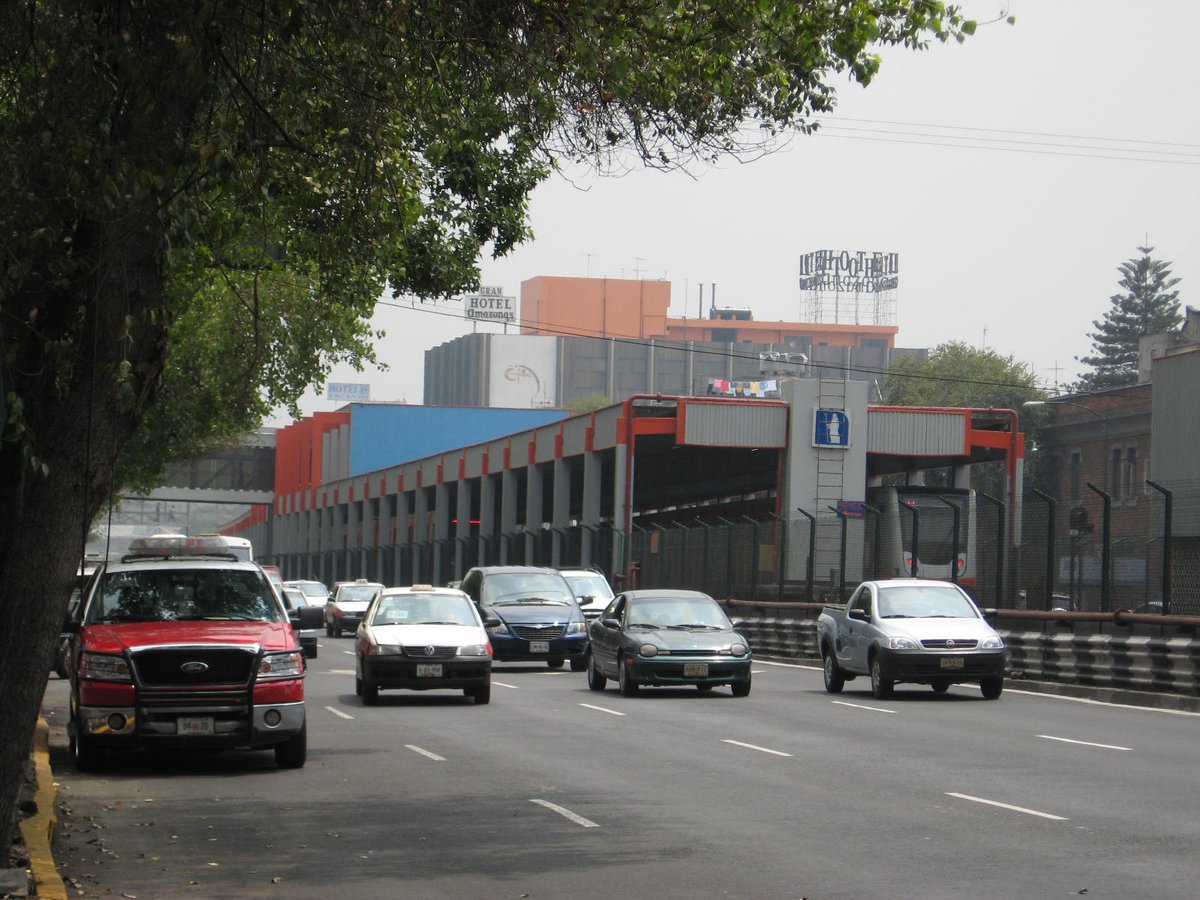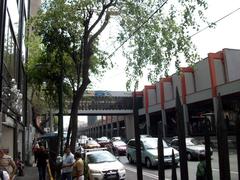
San Antonio Abad Mexico City: Visiting Hours, Tickets, and Historical Significance Guide
Date: 14/06/2025
Introduction
San Antonio Abad, located in the heart of Mexico City, stands as a living testament to the city’s layered history, spiritual heritage, and urban vibrance. Emerging from a simple hermitage established in 1530 on the colonial city’s periphery, the site evolved into a prominent hospital and monastery under the Antonine order by 1628. Over centuries, it has transformed from a place of religious devotion and charity to an industrial hub, and ultimately, into a culturally rich neighborhood blending tradition with urban life (mexicocity.cdmx.gob.mx).
Today, although the original monastery and hospital buildings are closed to the public, the area thrives with activity—boasting colonial architecture, traditional markets, vibrant street art, and renowned festivities such as the Feast of San Antonio Abad. This guide offers comprehensive insights into San Antonio Abad’s history, cultural and religious significance, visiting logistics, accessibility, nearby attractions, and practical travel tips. Whether you’re drawn by its storied past or lively present, San Antonio Abad is an essential stop for anyone wishing to understand Mexico City’s enduring and multifaceted identity (voyagemexique.info; mexicocity.cdmx.gob.mx).
Table of Contents
- Early Origins and Colonial Foundations
- Architectural Evolution and Industrial Transformation
- Religious and Social Significance
- Visiting Hours, Tickets, and Accessibility
- Annual Religious and Cultural Events
- Nearby Attractions and Local Highlights
- Urban Character and Local Life
- Arts, Culture, and Street Life
- Gastronomy and Culinary Experiences
- Accessibility and Transportation
- Visitor Tips and Practical Information
- Frequently Asked Questions (FAQ)
- Legacy and Cultural Continuity
- Notable Historical Facts
- Visuals and Media Recommendations
- Conclusion and Further Exploration
Early Origins and Colonial Foundations
San Antonio Abad’s origins trace back to 1530, when a hermitage dedicated to Saint Anthony the Abbot was founded on the outskirts of colonial Mexico City. Saint Anthony, venerated as the father of Christian monasticism, inspired the Antonine order to expand the site in 1628, transforming it into a hospital and monastery. For more than 150 years, the institution served the city’s sick and poor, emphasizing charity and community service (mexicocity.cdmx.gob.mx).
Architectural Evolution and Industrial Transformation
The San Antonio Abad complex reflects colonial architectural styles, with thick stone walls, arched corridors, and an austere chapel typical of the era. After the hospital and monastery closed in 1789, the buildings were repurposed for industrial use, notably as a textile factory. The area’s industrial legacy persists in landmarks like the historic Gala printing press, renowned for producing calendars distributed across Latin America (mexicocity.cdmx.gob.mx).
Religious and Social Significance
San Antonio Abad’s identity is deeply rooted in its religious history. The Antonine order, inspired by the values of Saint Anthony, provided care to the poor and travelers, embodying the Catholic Church’s mission of charity during the colonial period. Although the original religious functions have ceased, the neighborhood’s name and traditions keep this spiritual legacy alive (mexicocity.cdmx.gob.mx).
Visiting Hours, Tickets, and Accessibility
Original Monastery and Hospital:
These historic buildings are not open to the public; no tickets are required.
Parroquia de San Antonio Abad:
- Open daily: 8:00 AM – 7:00 PM
- Entry: Free
- Accessibility: Ramps and accessible entrances provided
Metro San Antonio Abad (Line 2):
- Weekdays: 5:00 AM – 12:00 AM
- Saturdays: 6:00 AM – 12:00 AM
- Sundays/holidays: 7:00 AM – 12:00 AM
- Fare: 5 pesos per ride; free for qualifying individuals (metro.cdmx.gob.mx)
Annual Religious and Cultural Events
The Feast of San Antonio Abad: Rituals and Significance
Every January 17th, San Antonio Abad hosts one of Mexico City’s most beloved traditions: the blessing of animals. People bring pets and livestock—often decorated with flowers or costumes—to receive blessings for health and protection. This ritual, merging Catholic and indigenous beliefs, is a vibrant celebration blending faith, culture, and community spirit (Mexico News Daily; The Playa Times).
- Festival visiting hours: 8:00 AM – 7:00 PM (main Mass and animal blessing around 10:00 AM)
- Admission: Free; no tickets required
- Pets: Welcome; leashed or in carriers
- Festivities: Markets, music, folk dances, pet costume contests
Official schedules and updates: Archdiocese of Mexico
Nearby Attractions and Local Highlights
- Mercado San Antonio Abad: Traditional market selling fresh produce, crafts, and local foods. Open daily, 7:00 AM – 3:00 PM.
- Ex-Convento de San Antonio Abad: Former monastery with preserved cloisters and gardens. Guided tours by appointment, weekends 10:00 AM – 4:00 PM (approx. 50 MXN).
- Gala Printing Press: Historic industrial site known for its role in Latin American printing.
- Nearby districts: Explore the Zócalo, Metropolitan Cathedral, and Palacio de Bellas Artes within easy reach (Voyage Mexique).
Urban Character and Local Life
- Avenida San Antonio Abad: A bustling thoroughfare lined with shops, vendors, and a cross-section of local urban life.
- Parks: Parque San Antonio Abad offers green space, playgrounds, and accessible paths (6:00 AM – 8:00 PM).
- Markets: Experience daily commerce and community at Mercado San Antonio Abad.
Arts, Culture, and Street Life
- Murals and Street Art: Colorful public art reflecting indigenous heritage and modern social themes.
- Festivals: Besides the January 17th feast, enjoy fairs, concerts, and food festivals throughout the year.
- Cultural centers: Adaptive reuse of historic buildings for art exhibitions, performances, and workshops.
Gastronomy and Culinary Experiences
- Traditional eateries: Sample tacos al pastor, pozole, chiles en nogada, and homemade salsas in local fondas and taquerías.
- Cafés and bakeries: Enjoy Mexican coffee, sweet breads, and a relaxed ambiance in neighborhood panaderías.
Accessibility and Transportation
- Metro: San Antonio Abad station (Line 2) is fully accessible and connects directly to the city center.
- Walking/Biking: Flat terrain and bike lanes make the area ideal for pedestrians and cyclists.
- Tips: Use public transport during festival days, as parking is limited.
Visitor Tips and Practical Information
- Safety: The area is generally safe; use standard precautions.
- Language: Spanish is predominant; basic English is spoken by some locals.
- Currency: Mexican pesos; cash is preferred in markets.
- Weather: Mild year-round, with rainy afternoons from June to September.
- Etiquette: Dress modestly in churches and always ask before taking photos during religious events.
Frequently Asked Questions (FAQ)
Q: What are the visiting hours for San Antonio Abad’s main attractions?
A: Parroquia de San Antonio Abad is open daily 8:00 AM – 7:00 PM. The Ex-Convento is accessible by guided tour on weekends, 10:00 AM – 4:00 PM. Mercado San Antonio Abad operates 7:00 AM – 3:00 PM.
Q: Is there an entry fee?
A: No, entry to the parish and market is free. Ex-Convento tours cost approximately 50 MXN per person.
Q: Are pets allowed during the feast?
A: Yes, all pets are welcome on January 17th for the blessing ceremony.
Q: How do I get there?
A: Use the San Antonio Abad metro station (Line 2); walking and biking are also convenient.
Q: Is the neighborhood accessible for people with disabilities?
A: The church and park are wheelchair accessible; the Ex-Convento has limited accessibility.
Legacy and Cultural Continuity
San Antonio Abad remains a microcosm of Mexico City’s broader historical trajectory. Its story of transformation—from hermitage to hospital, industrial center, and vibrant urban neighborhood—reflects the city’s resilience and adaptability. Community identity is preserved through ongoing traditions, local events, and the enduring presence of historical sites (mexicocity.cdmx.gob.mx).
Notable Historical Facts
- Founded: 1530 (hermitage); 1628 (hospital and monastery)
- Industrial legacy: Textile factory and Gala printing press
- Feast of San Antonio Abad: Annual animal blessing on January 17th
- Metro: San Antonio Abad station is a key transit hub (metro.cdmx.gob.mx)
Visuals and Media Recommendations
For an enhanced visitor experience, include:
- High-quality images of the Parroquia de San Antonio Abad, Mercado San Antonio Abad, local murals, and Parque San Antonio Abad
- Alt tags, e.g., “Parroquia de San Antonio Abad facade,” “Blessing of animals ceremony,” “Street art in San Antonio Abad”
- Interactive maps showing key landmarks and metro access
- Virtual tours or video walkthroughs of the neighborhood
Conclusion and Further Exploration
San Antonio Abad offers an authentic window into Mexico City’s past and present, blending colonial history, religious tradition, and lively urban culture. Whether admiring centuries-old architecture, participating in the annual animal blessing, or sampling local cuisine, you’ll find a unique and welcoming atmosphere.
For more insider tips, event updates, and guided tours, download the Audiala app, follow our social media channels, and explore related articles on Mexico City’s historic neighborhoods. Immerse yourself in the enduring spirit and contemporary vibrance of San Antonio Abad.
References
- San Antonio Abad Mexico City: Visiting Hours, Tickets, and Historical Insights, 2025, Mexico City Government
- San Antonio Abad Mexico City: Visiting Hours, Tickets, and Cultural Significance, 2025, Postposmo & Mexico News Daily, Mexico News Daily
- San Antonio Abad: Visiting Hours, Tickets, and Exploring Mexico City’s Historic Neighborhood, 2025, Voyage Mexique
- San Antonio Abad Visiting Hours, Festivals, and Local Life: Your Complete Guide, 2025, The Playa Times & My Wanderlusty Life, My Wanderlusty Life











































































































































































